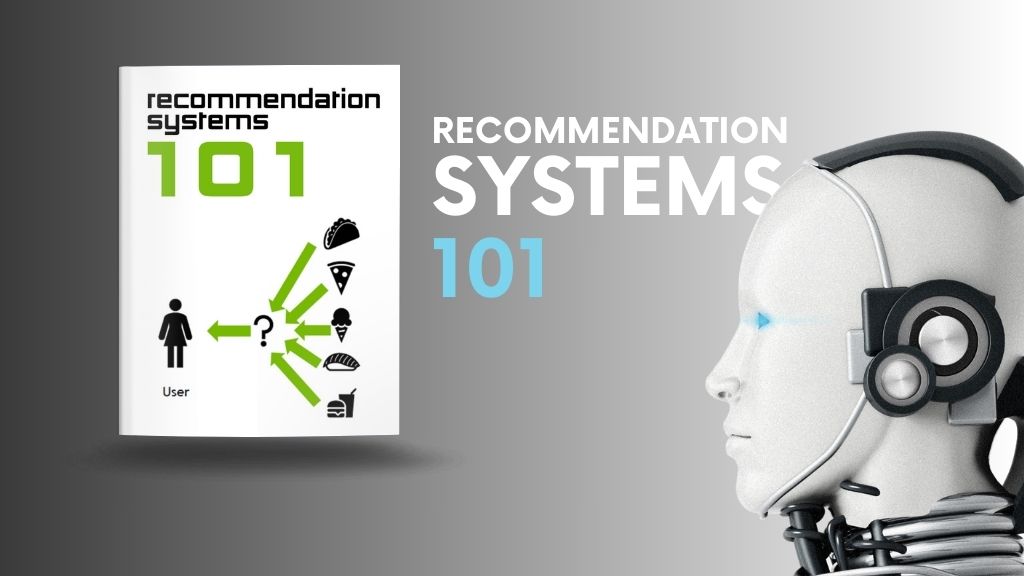In the digital age, information overload is a common challenge faced by users navigating through vast amounts of data. With countless options available at their fingertips, making informed decisions can be daunting. This is where recommendation systems (RS) come into play, serving as powerful tools designed to enhance user experience by streamlining choices based on individual preferences. This blog post will explore the fundamentals of recommendation systems, their various approaches, and the significance of effective design in tackling information overload.
Recommendation Systems Basics
At its core, a recommendation system is a software tool that predicts user preferences and provides personalized suggestions. Users and items are the two fundamental entities in a recommendation system. Each user rates or interacts with items, leading to the collection of user data, which can be explicit (direct ratings) or implicit (inferred from user behavior).
For instance, an online bookshop may utilize machine learning algorithms to recommend books based on a user’s previous purchases. These systems operate on a utility matrix, which captures user-item interactions. However, this matrix often contains numerous missing values, as users typically engage with only a fraction of available items. Thus, the primary challenge for a recommendation system lies in accurately predicting these missing values, allowing users to discover new items tailored to their preferences.
Recommendation Systems Algorithms
Recommendation systems can be broadly categorized into several approaches, each with its strengths and limitations:
2.1 Collaborative Filtering (CF)
Collaborative Filtering is one of the most widely used techniques in recommendation systems. It relies on the premise that users who agreed in the past will agree in the future. This method can be further divided into two categories:
- User-based CF: This technique recommends items by finding similar users. For example, if User A and User B have similar tastes, the system may recommend items that User A has enjoyed to User B.
- Item-based CF: This approach focuses on finding similar items rather than users. If two items are frequently rated similarly, they are likely to be recommended together.
While collaborative filtering is effective, it can struggle with the “cold start” problem, where it lacks sufficient data on new users or items to make accurate recommendations.
2.2 Content-based Filtering (CB)
Content-based Filtering focuses on the characteristics of items rather than user interactions. This approach analyzes item attributes (like genre, director, or author) and matches them with user profiles. For instance, if a user enjoys science fiction books, the system will recommend similar titles based on content features.
Content-based filtering excels in situations where user preferences are clear, but it may struggle to introduce users to new genres or items outside their established preferences.
2.3 Knowledge-based Recommendation Systems (KB/KG)
Knowledge-based Recommendation Systems utilize knowledge graphs to provide recommendations based on explicit user preferences and contextual information. This approach allows for more sophisticated recommendations as it leverages structured data and relationships between items, making it suitable for domains requiring high accuracy and specificity, such as real estate or travel.
2.4 Demographic Filtering (DF)
Demographic Filtering leverages user demographic information (such as age, gender, location) to make recommendations. This approach assumes that users with similar demographics will have similar preferences. While demographic filtering can enhance personalization, it may overlook unique individual preferences, leading to generic recommendations.
2.5 Hybrid Recommendation Systems
Hybrid Recommendation Systems combine multiple recommendation approaches to enhance performance. By integrating collaborative filtering, content-based filtering, and knowledge-based techniques, these systems can mitigate the weaknesses of individual methods. For example, a hybrid system may use collaborative filtering to identify similar users while employing content-based filtering to recommend items that match user interests.
2.6 Large Language Models (LLMs)
The emergence of Large Language Models has transformed recommendation systems, enabling them to understand and process natural language data effectively. LLMs can analyze user-generated content (like reviews and comments) to identify trends and preferences, enhancing the accuracy of recommendations. By integrating LLMs into recommendation systems, businesses can provide more context-aware and relevant suggestions.
Recommendation Systems in Machine Learning
Machine learning plays a crucial role in the design of recommendation systems, enabling them to learn from user interactions and improve over time. Various algorithms, including decision trees, neural networks, and clustering techniques, are employed to analyze user behavior and preferences.
3.1 Data Collection and Preprocessing
To design an effective recommendation system, it’s essential to gather and preprocess data accurately. This includes cleaning the data, handling missing values, and ensuring that the information is relevant and up-to-date. The quality of the input data significantly impacts the performance of the recommendation algorithms.
3.2 Model Training and Evaluation
Once the data is prepared, machine learning models are trained using historical user interactions. Different algorithms may be tested to determine the best fit for the specific application. Evaluation metrics, such as precision, recall, and F1-score, are utilized to assess the effectiveness of the recommendations.
3.3 Continuous Improvement
An effective recommendation system is not static; it should evolve as user preferences change. By implementing feedback loops, systems can continually refine their algorithms and adapt to shifting user behavior.
Addressing Information Overload
One of the primary motivations behind the design of recommendation systems is to combat information overload. In an era where users are bombarded with options, recommendation systems streamline the decision-making process by providing tailored suggestions.
4.1 Enhancing User Experience
By filtering through the noise and presenting only the most relevant options, recommendation systems enhance the user experience. Users can quickly find products or content that align with their preferences, reducing frustration and decision fatigue.
4.2 Increasing Engagement and Conversion Rates
For businesses, effective recommendation systems can lead to increased engagement and higher conversion rates. By delivering personalized content, companies can foster customer loyalty and encourage repeat business.
Future Trends in Recommendation Systems Design
The field of recommendation systems is constantly evolving, with ongoing research and innovation driving advancements in design and functionality. Some emerging trends include:
5.1 Enhanced Personalization
As data collection methods become more sophisticated, recommendation systems will achieve even greater levels of personalization. By leveraging user context, real-time data, and advanced analytics, businesses can provide highly relevant recommendations.
5.2 Ethical Considerations
With the increasing reliance on recommendation systems, ethical considerations surrounding data privacy and bias must be addressed. Designing systems that respect user privacy while delivering personalized experiences will be crucial in building trust with users.
5.3 Cross-domain Recommendations
Future recommendation systems may also explore cross-domain recommendations, where insights from one domain (e.g., music) can inform suggestions in another (e.g., movies). This holistic approach can lead to more diverse and intriguing recommendations.
In conclusion, the design of recommendation systems is a multifaceted endeavor that plays a vital role in addressing the challenges posed by information overload. By leveraging various approaches such as collaborative filtering, content-based filtering, and hybrid methods, businesses can create personalized experiences that resonate with users.
As technology continues to evolve, so too will the capabilities of recommendation systems. By staying attuned to emerging trends and continuously refining designs, businesses can harness the power of recommendation systems to enhance user engagement, drive conversions, and foster long-term customer relationships.







